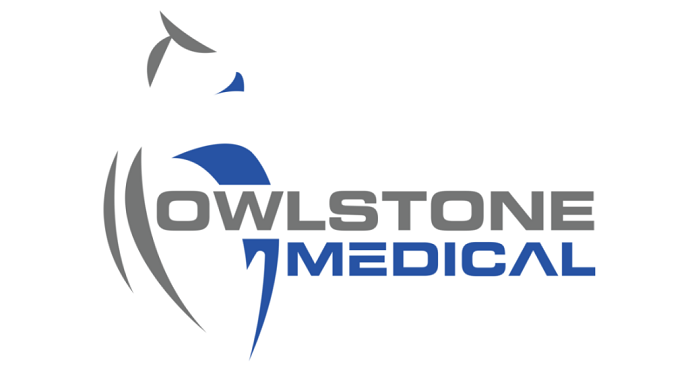- Data presented at EASL Congress 2023, Austria, 21-24 June
- Findings support the use of limonene as an EVOC® probe for the detection of cirrhosis, and demonstrate correlation with disease severity
Cambridge, UK, June 22, 2023: Owlstone Medical (“Owlstone”), the global leader in Breath Biopsy® for applications in early disease detection and precision medicine, today announced new data on the development of novel tests for the detection of liver disease. Results serving as proof of principle towards the goal of deploying tests for liver cirrhosis and the detection of Non-Alcoholic Steatohepatitis (NASH) were presented in a poster at the EASL Congress 2023, the annual meeting of the European Association for Study of the Liver, June 21-24 in Vienna, Austria.
The poster ‘Dynamic Limonene Breath Testing Maximizes Classification Performance for Subjects with Cirrhosis’ describes Owlstone’s research efforts to establish limonene as a non-invasive EVOC® Probe for liver disease through a cross-sectional study run at the Facultad de Medicina Clínica Alemana Universidad del Desarrollo and Hospital Padre Hurtado, Santiago, Chile.
The study enrolled 29 ultrasound-confirmed cirrhosis cases and 29 healthy controls to assess the performance of Owlstone’s dynamic limonene breath test in cirrhosis detection, to determine the optimal time for collection of a breath sample following ingestion of the EVOC probe, and to explore the correlation between limonene bioavailability and severity of disease.
As previously reported1, subjects with cirrhosis show significantly higher levels of limonene when compared with healthy controls, even from dietary sources alone, and this study demonstrated further elevated levels of limonene on breath following administration of the EVOC probe. Optimal test performance for the detection of cirrhosis was seen at 60 minutes post administration (83% sensitivity, 90% specificity, 89% PPV, 84% NPV, 0.91 AUC). Furthermore, the study results correlated closely with disease severity, opening a path for the use of the approach for early disease detection.
Owlstone is developing non-invasive, easy to use, breath tests that can be taken in primary care settings for the detection of liver cirrhosis; and for the earlier detection of liver disease at NASH where the potential for liver recovery is much greater, providing clinicians with a way to efficiently screen patients to identify those most likely to benefit from upcoming NASH therapeutics. The tests will be based on using both dietary limonene and a panel of orally administered EVOC probes including limonene.
Dr. Luis Méndez Alcaman, Primary Investigator, Facultad de Medicina Clínica Alemana Universidad del Desarrollo and Hospital Padre Hurtado commented: “Through this study, we have demonstrated that altered levels of limonene in exhaled breath following ingestion of an EVOC probe can effectively identify subjects with cirrhosis compared to controls. Notably, most of the patients in the study were early-stage cirrhosis cases and not decompensated, adding validity to our reported conclusions. The exciting potential value of Owlstone’s approach was reinforced during the study through two clinical cases that had been misallocated through initial ultrasound scans but were correctly identified by the breath test, one healthy control that actually had cirrhosis, and one cirrhotic patient whose disease had resolved.”
Billy Boyle, co-founder and CEO at Owlstone Medical, said: “These results have further increased confidence that our liver disease tests have the potential to become powerful clinical tools in both primary and secondary care settings. With this stage of our development complete, we plan to evaluate the impact of additional EVOC probes on test performance when administered alongside limonene, in particular to confirm the ability to reliably detect earlier stages of liver disease.”
Deaths from liver cirrhosis continue to increase across the world, in part due to its late diagnosis in secondary care. Non-alcoholic fatty liver disease (NAFLD) and NASH are leading global causes of chronic liver disease. Approximately 24% of U.S. adults have NAFLD, which has advanced to NASH in between 1.5% to 6.5% of the population2. Liver biopsy has long been the gold standard to stage disease, however it is costly, invasive, and can have serious complications, and so is unsuited for broad use. Liver disease therefore is often diagnosed late, at the stage of cirrhosis with decompensation, when prognosis is poor3.
This diagnostic gap is increasingly being recognized in clinical care, by payors, and by governments. At a recent U.K. parliamentary debate, coinciding with International NASH day4, liver disease was declared a ‘silent killer’ and a ‘public health emergency’5, and there was a call for an expansion of liver testing in at-risk individuals, including a commitment to drive earlier diagnosis of liver disease.
The poster presented can be viewed here:
References:
- https://www.owlstonemedical.com/about/news/2020/sep/22/announcing-key-liver-study-results/
- https://www.niddk.nih.gov/health-information/liver-disease/nafld-nash/definition-facts
- https://pubmed.ncbi.nlm.nih.gov/35472313/
- https://www.international-nash-day.com/
- https://www.medscape.co.uk/viewarticle/liver-disease-public-health-emergency-mps-2023a1000cll



